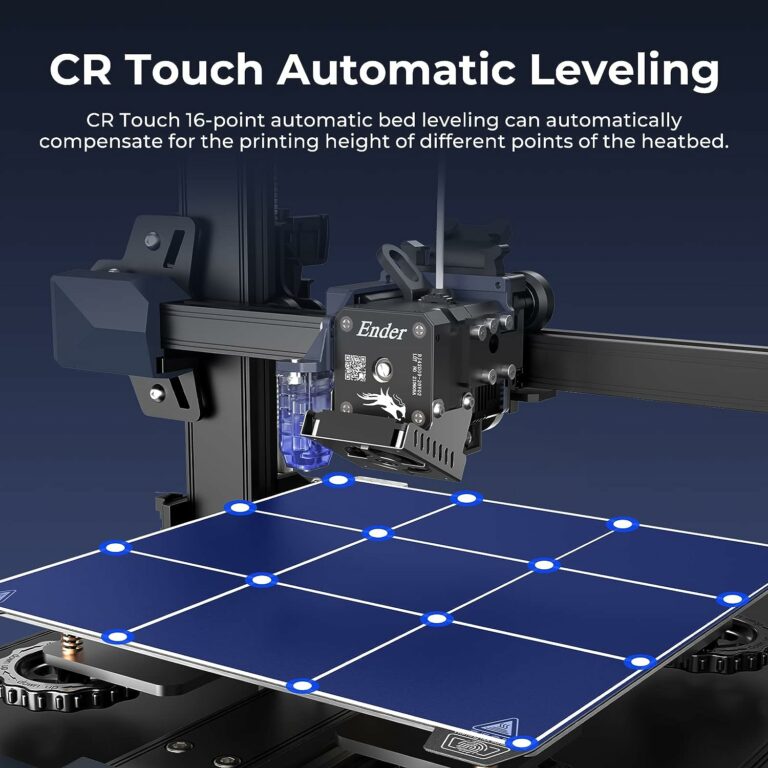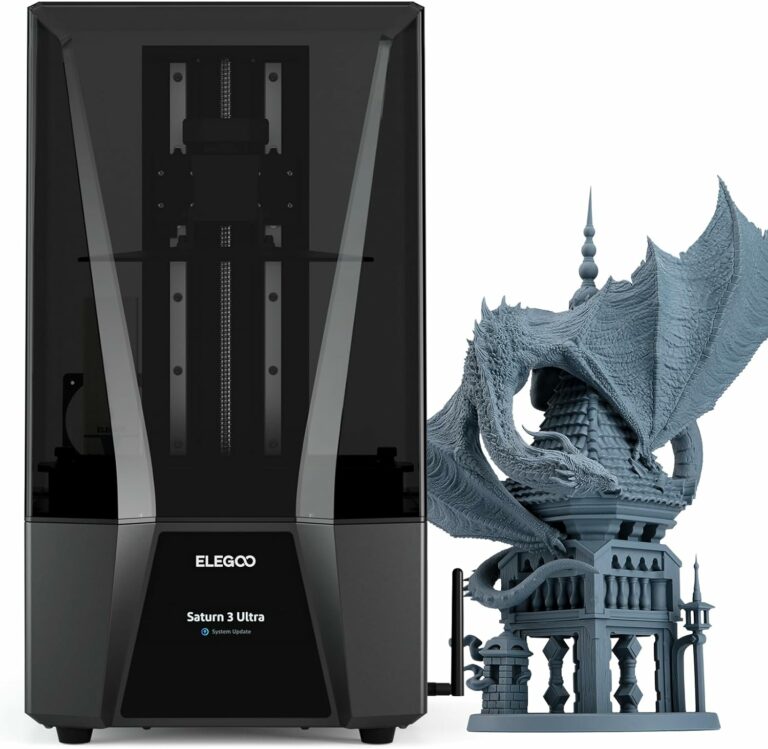Are you curious about the latest buzzword in technology: 5G? Well, get ready to have all your questions answered! In this article, we will demystify the hype around 5G technology and delve into what it really means for your gadgets. From faster download speeds to improved connectivity, you’ll discover how this revolutionary technology is set to transform the way you use your smartphone, tablet, and other devices. So sit back, relax, and prepare to unlock the potential of 5G!
What is 5G Technology?
Explaining the fundamentals of 5G technology
5G technology is the next generation of wireless communication that aims to revolutionize the way we connect and interact with our gadgets. It promises faster speeds, lower latency, improved network coverage, and the ability to support an increasingly connected world. Unlike its predecessors, 3G and 4G, which mainly focused on providing faster internet speeds for smartphones, 5G is designed to cater to the diverse needs of a wide array of devices, from smartphones and tablets to IoT-enabled devices and self-driving cars.
Differentiating 5G from previous generations (3G, 4G)
While 3G and 4G provided significant improvements over their respective predecessors, they were primarily designed to enhance the browsing and streaming experiences on mobile devices. 5G takes it a step further by not only improving internet speed but also addressing the fundamental challenges faced by previous generations. It offers significantly faster download and upload speeds, reduced latency, and enhanced network capacity. These advancements make 5G suitable for emerging technologies like IoT, augmented reality (AR), virtual reality (VR), and artificial intelligence (AI).
Understanding the key features of 5G
Some of the key features of 5G technology include:
Greater Speed: 5G is expected to deliver download speeds of up to 10 gigabits per second (Gbps), which is approximately 100 times faster than 4G LTE. This allows users to download large files, stream high-definition videos, and play online games without any lag or buffering.
Lower Latency: Latency refers to the delay between the time a data packet is sent and the time it reaches its destination. 5G aims to reduce latency to as low as 1 millisecond (ms), enabling real-time interactions and applications that require instant responsiveness, such as remote surgeries or autonomous vehicles.
Improved Network Capacity: With the exponential growth of internet-connected devices, 5G is designed to handle a massive number of devices simultaneously. This increased network capacity ensures a seamless experience even in densely populated areas or during major events where multiple users are connected to the network simultaneously.
Network Slicing: 5G introduces the concept of network slicing, allowing the network to be divided into multiple virtual networks based on specific requirements. This customization enables tailored services for different industries and applications, ensuring optimal performance for each.
How 5G Works
Explaining the underlying technology behind 5G
At its core, 5G technology relies on a combination of different technologies and techniques to deliver its promised performance. One of the key technologies is Massive MIMO (Multiple-Input Multiple-Output), which utilizes a larger number of antennas at both the transmitting and receiving ends. This enables spatial multiplexing, which boosts data throughput and capacity by transmitting multiple data streams at the same time over the same frequency.
Another crucial technology used in 5G is beamforming, which utilizes advanced signal processing algorithms to focus the wireless signal towards a specific user or device. By dynamically adjusting the direction and intensity of the signal, beamforming ensures improved signal strength, reduced interference, and better coverage, especially in areas with weak signals or obstacles.
Breaking down the network architecture of 5G
The network architecture of 5G is divided into three key components: the Radio Access Network (RAN), the Core Network (CN), and the User Equipment (UE). The RAN consists of base stations or cell towers that connect to the UE through wireless links. These base stations communicate with each other and the Core Network, which is responsible for managing and routing data traffic.
Highlighting the role of small cells and beamforming
In 5G networks, small cells play a crucial role in expanding network coverage and capacity. Unlike traditional macrocells, which cover larger areas, small cells are deployed in localized areas, such as city centers or stadiums, to handle high data traffic demand. These small cells are placed closer to the end-users, resulting in improved network performance and reduced latency.
Beamforming technology is also employed in small cells to enhance coverage and capacity. By focusing the wireless signal towards specific users or devices, beamforming ensures that the received signal is stronger, leading to better data transmission rates and reduced interference.
Discussing the use of millimeter wave spectrum
One crucial aspect of 5G technology is the utilization of the millimeter wave (mmWave) spectrum. This high-frequency spectrum offers significantly higher bandwidth compared to the frequencies used by previous generations. However, mmWave signals have limited range and are easily obstructed by physical objects, such as walls or trees. To overcome this limitation, small cells equipped with mmWave antennas are deployed in densely populated areas to ensure reliable and high-speed connectivity.

Benefits of 5G for Gadgets
Enhanced speed and capacity for data transmission
With 5G, gadgets can experience significantly faster data transmission speeds. Whether you’re downloading an app, streaming a movie, or uploading high-resolution photos, the improved speed of 5G ensures that these activities are completed in a fraction of the time it would take on older networks. This means less waiting and more time enjoying the content you love.
Lower latency and responsiveness
Latency refers to the time it takes for data to travel from the source to the destination and back. With 5G, latency is reduced to a minimum, enabling near-instantaneous responses. This is especially beneficial for gamers and users of real-time applications, where even the slightest delay can significantly impact the experience. With lower latency, gadgets can respond quickly to user inputs, creating a more seamless and immersive user experience.
Improved network coverage and reliability
One of the limitations of previous generations of wireless networks was their ability to provide consistent coverage, especially in crowded or remote areas. With 5G, network coverage is significantly improved, ensuring that gadgets stay connected even in challenging environments. This enhanced coverage and reliability mean that you can rely on your gadgets to stay connected and perform optimally, no matter where you are.
Enabling advanced technologies like IoT and AI
From smart speakers and wearable devices to connected appliances and autonomous vehicles, the Internet of Things (IoT) has continued to grow rapidly. 5G plays a crucial role in supporting this expanding ecosystem by providing the necessary bandwidth, reliability, and low latency required for seamless connectivity. This enables gadgets to interact and communicate with each other and opens up new possibilities for advanced technologies like artificial intelligence (AI) to thrive.
Implications for Smartphone Users
Optimized browsing and streaming experiences
For smartphone users, one of the most noticeable benefits of 5G is the improved browsing and streaming experiences. With faster download speeds and lower latency, web pages load instantly, and streaming high-definition videos is a seamless experience. No more frustrating buffering or waiting for content to load; 5G ensures that you can access the internet and enjoy your favorite content without any interruptions.
Seamless integration with smart home devices
As smart homes become increasingly popular, integrating smartphones with various smart home devices is essential. With 5G, this integration becomes smoother and more efficient. Imagine controlling your lights, thermostat, security cameras, and other devices at the touch of a button, with virtually no delay. 5G’s low latency and enhanced capacity make it possible for your smartphone to seamlessly interact with all your smart home gadgets.
Expanded capabilities for AR and VR applications
Augmented reality (AR) and virtual reality (VR) applications have tremendous potential in fields such as gaming, education, healthcare, and more. However, these technologies require significant computational power and high-speed data transmission to deliver an immersive experience. 5G enables smartphones to handle these demanding applications by providing the necessary bandwidth, low latency, and reliable connections. This means you can enjoy AR games, virtual tours, and other immersive experiences without any glitches or lags.
Potential for transformative mobile gaming experiences
With the advent of cloud gaming and the rise of smartphone gaming, the demand for high-performance, low-latency connections has grown. 5G technology is set to fulfill this demand, offering gamers a transformative experience. With faster download speeds and lower latency, you can download games quickly, play multiplayer games without lag, and even stream graphically intensive games without the need for a high-end gaming rig. 5G paves the way for high-quality gaming experiences, even on the go.

Impact on Internet of Things (IoT)
Enabling a massive scale of interconnected devices
The Internet of Things (IoT) is a network of interconnected devices that communicate and share data with each other, creating a smart and interconnected ecosystem. 5G plays a pivotal role in enabling the massive scale of interconnected devices that IoT requires. With its enhanced network capacity, low-latency connections, and improved coverage, 5G can handle the vast amount of data generated by IoT devices, ensuring seamless communication between them.
Facilitating real-time data transfer and analysis
One of the critical aspects of IoT is the ability to transfer and analyze data in real-time. Whether it’s collecting data from sensors in a smart city or monitoring vital signs in a healthcare setting, 5G’s low latency and high-speed data transmission make real-time data transfer and analysis possible. This enables industries to make informed decisions, optimize processes, and deliver better services to consumers.
Enhancing the capabilities of smart homes and cities
Smart homes and cities rely on continuous connectivity and communication between different devices and systems. 5G’s improved network coverage, low latency, and high capacity are essential for the smooth functionality of these interconnected systems. From smart energy management systems and smart grids to intelligent transportation systems and environmental monitoring, 5G enhances the capabilities of smart homes and cities, improving efficiency, sustainability, and overall quality of life.
Opening up new opportunities for automation and AI
Automation and artificial intelligence (AI) are becoming increasingly prevalent in various industries, including manufacturing, logistics, and agriculture. 5G technology acts as an enabler for exponential growth in automation and AI applications. Its low latency, high-speed connections, and massive device support allow for seamless interaction and coordination between intelligent systems, paving the way for increased efficiency, productivity, and innovation.
Revolutionizing the Healthcare Industry
Advancing telemedicine and remote treatments
Telemedicine, the remote delivery of healthcare services, has witnessed significant growth in recent years, especially due to the ongoing pandemic. 5G plays a vital role in advancing telemedicine by providing the necessary infrastructure for high-quality video consultations, remote monitoring of patients’ vital signs, and real-time sharing of medical data. This enables healthcare professionals to provide timely and efficient care to patients, irrespective of their physical location.
Empowering IoT-enabled medical devices
IoT-enabled medical devices, such as wearable health monitors and connected medical equipment, have the potential to revolutionize healthcare. With 5G’s enhanced connectivity and low latency, these devices can seamlessly transmit data to healthcare providers in real-time. This continuous flow of data enables remote monitoring, early detection of health issues, and personalized treatment plans, improving patient outcomes and reducing healthcare costs.
Enabling reliable and low-latency robotic surgeries
Robotic surgeries require precise control and real-time feedback to ensure patient safety. 5G’s ultra-low latency and high-speed connections enable surgeons to perform complex procedures remotely, with greater precision and control. With 5G, the delays between the surgeon’s actions and the robot’s response are virtually eliminated, allowing for more effective and efficient surgical procedures.
Improving healthcare accessibility and efficiency
In addition to improving the quality of care, 5G also enhances healthcare accessibility, especially for underserved or remote areas. With its improved network coverage, healthcare providers can reach patients who previously faced barriers to healthcare access. Additionally, 5G facilitates the secure and efficient exchange of medical records and information, reducing administrative burdens and streamlining healthcare processes.

Transformative Potential for Self-driving Cars
Enabling real-time communication between vehicles
Communication between vehicles is critical for the successful deployment of self-driving cars and the improvement of road safety. 5G’s low latency and high-speed connections enable real-time communication between vehicles, enabling them to share information about their positions, speed, and road conditions. This collaboration ensures that self-driving cars make informed decisions, avoid accidents, and navigate efficiently.
Facilitating low-latency decision-making for autonomous systems
Autonomous systems, such as self-driving cars, rely on real-time data processing and decision-making. 5G’s low latency connections enable these systems to make split-second calculations and responses, ensuring safe and efficient operations. Whether it’s avoiding a potential collision or adjusting the vehicle’s trajectory based on changing road conditions, 5G’s capabilities contribute to the overall reliability and performance of autonomous systems.
Enhancing road safety and traffic management
The introduction of self-driving cars has the potential to significantly improve road safety and traffic management. 5G technology plays a key role in enhancing these aspects by providing a robust and reliable communication infrastructure. With real-time data exchange between vehicles and road infrastructure, traffic congestion can be better managed, and accidents can be prevented through improved situational awareness and coordinated responses.
Paving the way for smart transportation infrastructure
The deployment of self-driving cars requires a comprehensive and interconnected transportation infrastructure. 5G technology acts as the backbone of this infrastructure, providing the necessary connectivity and communication between vehicles, traffic signals, and transportation management systems. Through its low-latency connections and high network capacity, 5G paves the way for a smarter, safer, and more efficient transportation system.
Security and Privacy Concerns
Discussing potential vulnerabilities in 5G networks
While 5G brings numerous benefits, it also introduces new security challenges. The increased number of connected devices and the complexity of the network architecture create potential vulnerabilities that malicious actors can exploit. It is essential to address these vulnerabilities and strengthen security measures to prevent unauthorized access, data breaches, and other cyber threats.
Addressing concerns about data privacy and surveillance
With the proliferation of connected devices and the massive amount of data generated by 5G networks, data privacy becomes a paramount concern. It is crucial to establish robust data privacy regulations and implement encryption protocols to protect users’ personal information. Additionally, transparency and user consent are essential to address concerns about potential surveillance and misuse of data.
Exploring the risks of IoT devices on 5G networks
The rapid growth of the IoT brings forth the challenge of securing a vast number of interconnected devices. IoT devices can be susceptible to security breaches, potentially compromising the entire network. It is necessary to implement robust security measures, such as device authentication, secure firmware updates, and intrusion detection systems, to mitigate the risks associated with IoT devices on 5G networks.
Analyzing potential mitigation strategies
To address the security and privacy concerns related to 5G, a multifaceted approach is necessary. This includes collaboration among industry stakeholders, governments, and regulatory bodies to establish security standards and frameworks. Implementing encryption, secure authentication protocols, and continuous monitoring can help mitigate security risks. Additionally, educating users about best practices regarding device security, data privacy, and safe internet usage is crucial to ensure a secure 5G ecosystem.
Challenges and Limitations of 5G
Cost and infrastructure requirements
One of the primary challenges of implementing 5G technology is the significant cost associated with building and maintaining the necessary infrastructure. The deployment of small cells, upgrading existing network components, and acquiring the required spectrum licenses require substantial investments. The cost factor poses a challenge for network operators and may result in delays in the widespread adoption of 5G in certain areas.
The need for widespread network deployment
To fully benefit from 5G, widespread network deployment is necessary. While major cities and urban areas are likely to have early access to 5G, rural areas and remote regions may experience delays in network coverage. The gradual expansion of 5G networks poses a challenge in ensuring equal access and bridging the digital divide.
Navigating regulatory hurdles and spectrum availability
The deployment of 5G networks involves navigating complex regulatory frameworks and securing the necessary spectrum. Spectrum availability varies from country to country, and coordinating spectrum allocation and implementing consistent regulations can be challenging. Streamlining regulatory processes, incentivizing spectrum availability, and fostering collaboration among different stakeholders are crucial in overcoming these hurdles.
Compatibility issues with older devices
While 5G brings significant advancements, it is essential to consider device compatibility. Older devices that do not support 5G technology may not be able to access the benefits offered by the new network. This poses a challenge for users who wish to upgrade their devices and take advantage of 5G technology. It is necessary to ensure backward compatibility and provide affordable options for users to transition to 5G-enabled devices.
The Global Race for 5G
Comparing the progress of different countries in adopting 5G
The race for 5G dominance has been ongoing worldwide, with various countries striving to be at the forefront of this technological revolution. Countries such as the United States, China, South Korea, and Japan have made significant progress in adopting and implementing 5G networks. These countries have invested heavily in building the necessary infrastructure and allocating spectrum, putting them ahead in the global race.
Exploring the economic and geopolitical implications
The successful implementation of 5G technology has significant economic and geopolitical implications. Countries that lead in 5G adoption are likely to benefit from increased economic growth, job creation, and technological innovation. Additionally, they may have a competitive advantage in sectors that rely heavily on 5G, such as manufacturing, healthcare, and transportation. The race for 5G dominance also has geopolitical implications, with countries vying for influence in emerging technologies and the associated economic benefits.
Highlighting the competition between technology giants
The race for 5G dominance has intensified the competition between technology giants. Companies like Huawei, Ericsson, Nokia, and Qualcomm are at the forefront of 5G technology development and deployment. These companies compete to provide the best equipment, infrastructure solutions, and patents, aiming to secure a significant market share in the global 5G landscape. This competition drives innovation and pushes the boundaries of what 5G can offer.
Examining the race for 5G dominance
The race for 5G dominance is a complex and dynamic process involving technological advancements, regulatory frameworks, and market dynamics. To achieve 5G dominance, countries and companies must invest in research and development, spectrum allocation, infrastructure deployment, and collaboration across industries and borders. The countries and companies that successfully navigate these challenges and embrace the transformative power of 5G are likely to shape the future of connectivity and drive innovation in the digital era.
In conclusion, 5G technology holds immense potential to revolutionize the way we interact with our gadgets and reshape various industries. With its enhanced speed, lower latency, improved network coverage, and support for emerging technologies, 5G is poised to empower IoT, enable transformative healthcare solutions, drive autonomous systems, and provide a foundation for smart cities and transportation systems. However, the successful implementation of 5G also requires addressing challenges related to security, privacy, infrastructure, and device compatibility. As the global race for 5G dominance continues, it is crucial to prioritize collaboration, innovation, and inclusivity to unlock the full potential of this transformative technology. So get ready, buckle up, and prepare to embrace the exciting possibilities that 5G has in store for your gadgets!



